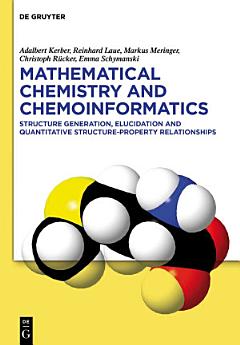Mathematical Chemistry and Chemoinformatics: Structure Generation, Elucidation and Quantitative Structure-Property Relationships
เกี่ยวกับ eBook เล่มนี้
- More than 20 years of experience in molecular structure generation, from conceptualization through to applications
- Innovative, interdisciplinary text demonstrating example queries with software packages such as MOLGEN-online
- Detailed explanations on establishing QSPRs and QSARs as well as structure elucidation using mass spectrometry and structure generation.
Aims and Scope
This work provides an introduction to mathematical modeling of molecules and the resulting applications (structure generation, structure elucidation, QSAR/QSPR etc.). Most chemists have experimented with some software that represents molecules in an electronic form, and such models and applications are of increasing interest in diverse and growing fields such as drug discovery, environmental science and metabolomics. Furthermore, structure generation remains the only way to systematically create molecules that are not (yet) present in a database. This book starts with the mathematical theory behind representing molecules, explaining chemical concepts in mathematical terms and providing exercises that can be completed online. The later chapters cover applications of the theory, with detailed explanations on QSPR and QSAR investigations and finally structure elucidation combining mass spectrometry and structure generation. This book is aimed in particular at the users of structure generation methods and corresponding techniques, but also for those interested in teaching and learning mathematical chemistry, and for software designers in chemoinformatics.
เกี่ยวกับผู้แต่ง
A.Kerber, R.Laue, U. Bayreuth; M.Meringer, DLR Oberpfaffenhofen; C.Rücker, Leuphana U. Lüneburg; E.Schymanski, EAWAG Dübendorf




